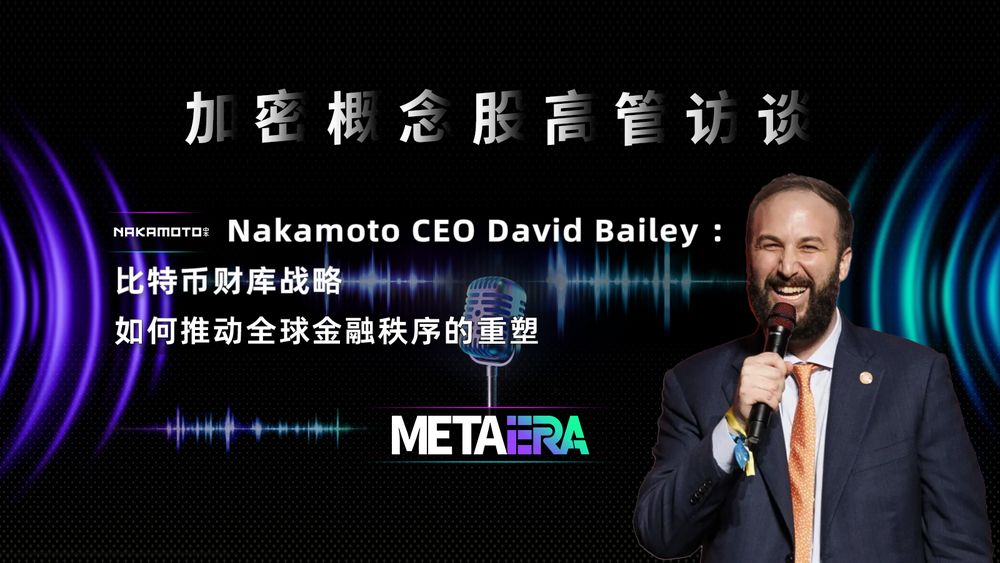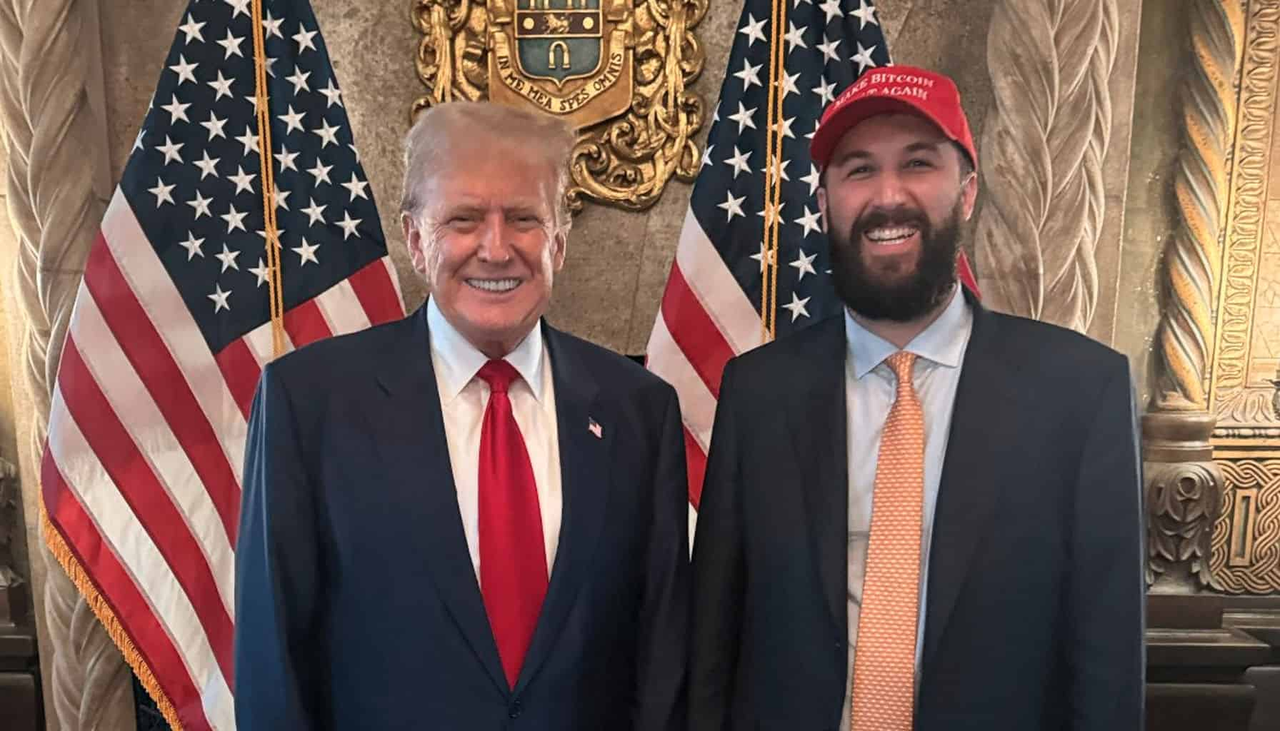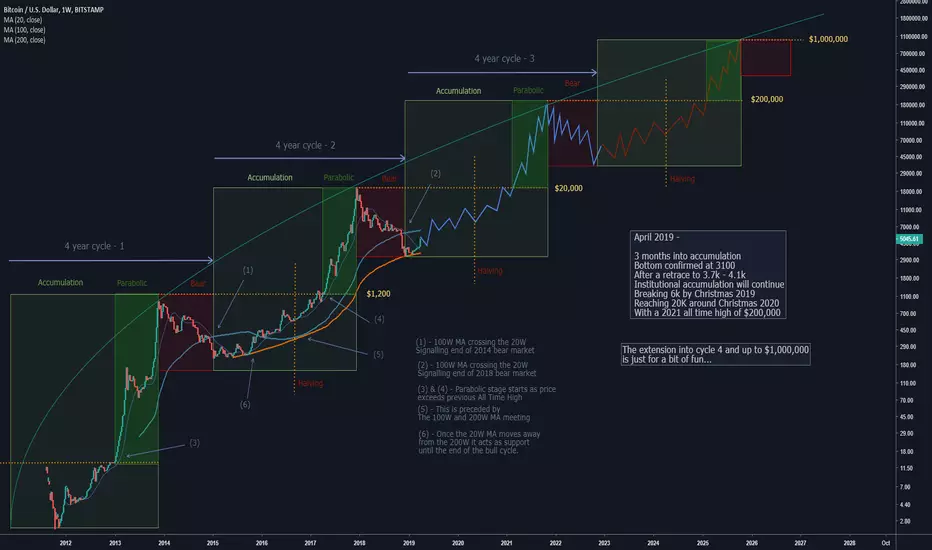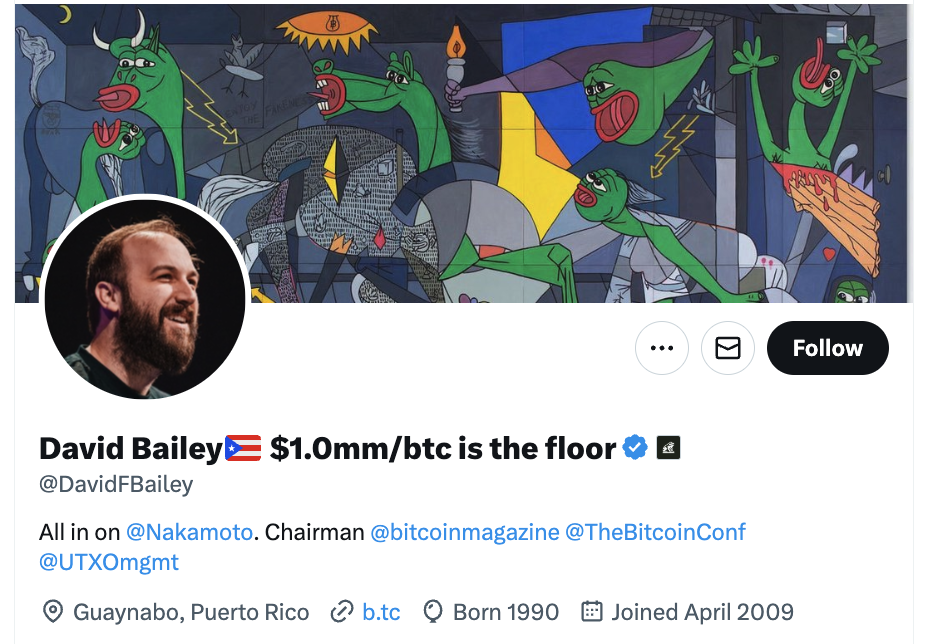Author: Lesley
Source: MetaEra
The Web 3.0 strategies and layouts of publicly listed companies have become a hot topic of increasing public interest. Against this backdrop, MetaEra has officially launched the “Executive Interviews with Crypto Concept Stocks” series. We will engage in conversations with those business leaders who dare to lead in the wave of digital transformation, exploring their strategic layouts, business innovations, and financial innovations through the first-person perspective of decision-makers, providing industry participants with forward-looking insights.

On August 14, KindlyMD, Inc. (Nasdaq: NAKA) announced the completion of its merger with Bitcoin-native holding company Nakamoto Holdings Inc. The merged company continues to trade on the Nasdaq capital market under the stock code "NAKA." This transaction raised approximately $540 million through PIPE financing, with funds primarily intended for purchasing Bitcoin. As Nakamoto CEO David Bailey stated, "Our vision is to have global capital markets operate under the Bitcoin standard. Today's merger is the starting point of the company's journey towards this goal." Behind this ambitious plan is a grand strategic blueprint—acquiring and establishing Bitcoin treasury companies in 80 global capital markets to achieve what Bailey calls "Hyperbitcoinization."

Nakamoto CEO David Bailey interviewed by Naka Nation
This article is an edited version of an interview with Nakamoto CEO David Bailey conducted by Naka Nation. MetaEra has carefully translated and edited it to provide readers with a more comprehensive understanding of this Bitcoin industry veteran's vision, strategy, and global expansion plans for digital assets and his company, Nakamoto.
In this in-depth conversation, David Bailey not only shared his legendary journey from first encountering Bitcoin in 2012 to visiting the White House six times in one year but also elaborated on his bold predictions for Bitcoin's future trajectory and how Nakamoto is redefining the way institutional investors participate in the Bitcoin market through its innovative "Bitcoin per Share" metric and global layout. From personal beliefs to business strategies, from technological innovations to power restructuring, this dialogue reveals a grand plan that is reshaping the global financial landscape.
The Rise of Bitcoin: Thirteen Years from Marginal to Mainstream
In November 2012, while still a college student, David Bailey received an article about Bitcoin forwarded by a friend. As a staunch supporter of Ron Paul and a believer in the Austrian School of economics, Bailey's first reaction was that it must be a scam. "Given my personality, my instinct was to prove to my friends that this was a scam," Bailey recalled. However, as he delved deeper into research, he found himself unable to identify any reasons for Bitcoin's failure.
This discovery completely changed his perspective. "If there is a one in a million chance of success, it's worth a try because this is the best idea that has ever come along—it disrupts all currencies, all values, everything," Bailey said. From that moment on, he purchased his first batch of Bitcoin and became "completely addicted," even dropping out of school because of it.
This obsession propelled Bailey into an extraordinary journey. In the early two to three years, he attended Bitcoin conferences and meetups around the world. "Interestingly, no matter where I went, each place had a different story explaining how it connected to Bitcoin," Bailey observed. In this world, every location embracing Bitcoin has its unique reasons.

Bitcoin Conference Hosted by BTC Inc (Source: BTC Inc Official Website)
His global conference experiences convinced Bailey that the era of Bitcoin had arrived. "Once you hear these stories, you realize that what we imagined is becoming a reality. This is what the world needs."
Thirteen years later, Bailey's identity has undergone a dramatic transformation. "This year, I have been to the White House six times," he revealed in the interview. The former college dropout is now discussing Bitcoin policy with the President of the United States, dining with the chairman of the Securities and Exchange Commission. "When the U.S. launches a strategic Bitcoin reserve, we hear news that governments around the world are working to advance Bitcoin purchases."
This transformation is reflected not only in Bailey personally but also in the evolution of the Bitcoin ecosystem. From Wall Street to government agencies, from traditional financial giants to sovereign wealth funds, an increasing number of institutional forces are beginning to embrace Bitcoin, which was once viewed as a "rebel asset."
However, the mainstreaming of Bitcoin is also accompanied by cultural controversies. Bailey candidly admits that this transformation does exist: "The Bitcoin culture has transformed from a countercultural cypherpunk to a suited elite, and this cannot be ignored." At the most recent Bitcoin conference, there was a noticeable increase in attendees in suits, which made some old-school Bitcoin believers uneasy.

David Bailey with President Trump (Source: Bitcoin Magazine)
"I hardly ever wore a suit in my life until I started dealing with President Trump—if you want to meet the President, you have to wear a suit," Bailey explained. But he emphasized that this external change does not mean a compromise on the core principles of Bitcoin: "All our views on Bitcoin are projections of our worldview onto it. Bitcoin is just code, and code does not change."
Bailey believes that what is happening in the world today is not Wall Street taking over Bitcoin, but Bitcoin taking over Wall Street. "When we put on suits and walk into Wall Street offices to get them to buy Bitcoin, it does not mean we are compromising. Let's be clear: they are the ones buying Bitcoin; they are the ones bowing to Bitcoin."
This restructuring of power dynamics is accelerating globally. Bailey revealed that British politician Nigel Farage recently contacted them, hoping to establish a strategic Bitcoin reserve in the UK. "One by one, as the dominoes fall, the chain reaction is accelerating."
From a Bitcoin skeptic in 2012 to a frequent visitor to the White House by 2025, Bailey's personal trajectory is a microcosm of Bitcoin's journey from the margins to the mainstream. This is not just a personal growth story but a revolutionary process redefining the global financial order. As Bailey stated, "In five years, every government on Earth will own Bitcoin. In five years, Bitcoin holders will become the most powerful political faction in the world."
Nakamoto Strategy: 80 Bitcoin Treasury Companies Driving Hyperbitcoinization
When asked why he chose Bitcoin treasury companies instead of ETFs as the vehicle for promoting the "Hyperbitcoinization" strategy, David Bailey did not hesitate to point to the core of the issue: "ETFs have strict functional limitations; they are merely proxies for Bitcoin. Establishing and operating companies gives us the ability not only to accumulate Bitcoin on the balance sheet but also to utilize Bitcoin in practical operations—we can make Bitcoin function like other assets."
This strategy stemmed from an unexpected discovery. About a year ago, Bailey and his team invested in a Japanese hotel company, Metaplanet, listed on the Tokyo Stock Exchange. At that time, the company was valued at only $15 million and was referred to as a "zombie company"—essentially a business on the brink of death. "Six of us friends pooled together $6 million to invest in this company," Bailey recalled. After the transaction was completed, the company's valuation rose to $21 million, and then they witnessed an almost unbelievable growth trajectory: "We watched this company grow from $21 million to $50 million, then to $100 million, $200 million, $500 million, $1 billion, $2 billion, $5 billion, $10 billion, $20 billion, $50 billion, and finally surpass $6 billion, reaching $7 billion."
This surge in valuation made Bailey realize a key insight: shareholders purchasing Metaplanet had a completely different background compared to those buying Strategy stock. "They are Japanese, that is obvious—this is a Japanese stock, so the investors are Japanese. But we overlooked a fact: people living in a certain region are often more willing to buy stocks from companies in their own country."
Inspired by this discovery, Bailey began to think about how to replicate this success on a global scale. He proposed an ambitious strategic plan: "We should implement this model in more places. In fact, we should do this in every capital market on Earth."
"This is a global phenomenon," Bailey emphasized, "We need Bitcoin treasury companies in every capital market—there are 80 different capital markets globally, and we need at least one Bitcoin treasury company in each of these 80 markets to purchase Bitcoin and establish a shareholder base in their countries, bringing Bitcoin to their markets."
Bailey further explained: "Our goal is to make it so that every investor is just 'one click away' from purchasing Bitcoin. We want to raise a Bitcoin treasury in the U.S. and use this Bitcoin to provide seed funding for Bitcoin treasury companies around the world, acquiring publicly listed companies in the 80 global capital markets. Then, 80 CEOs will lead 80 investor relations teams to raise funds door-to-door in their countries to purchase Bitcoin, illuminating the world with Bitcoin's orange through the capital markets."
In addition to the treasury company network, Nakamoto's strategy also includes building a complete Bitcoin adoption ecosystem. Bailey observed that many companies require similar support services:
Educational content services: For example, Metaplanet collaborates with Bitcoin Magazine to provide Japanese Bitcoin news and educational content for the Japanese market;
Custodial services: All companies need secure storage after purchasing Bitcoin;
Brokerage services: Brokerage services to help companies purchase Bitcoin.
Bailey describes this as a "full-service" offering: "Any company in the world that wants to enter Bitcoin can contact us, and we will handle everything from start to finish, making it very simple." The uniqueness of this service suite lies in the fact that there are currently very few companies focused on helping businesses adopt Bitcoin. "Think about how many companies focus on individual purchases of Bitcoin, while almost no companies focus on helping businesses buy Bitcoin," Bailey added.
Bailey firmly believes that this strategy is just the beginning. As more governments begin to purchase Bitcoin, Nakamoto is also preparing for the next phase. "Governments may need such a product suite in the future," he said.
Bailey's ultimate vision is to achieve "Hyperbitcoinization"—making Bitcoin the standard for every financial transaction, allowing every person, every computer, every machine, and every AI on Earth to transact in Bitcoin. When asked if this is an achievable goal, Bailey answered without hesitation: "This will 100% happen." His logic is simple and powerful: "As people gradually abandon the old system, the forces supporting the old system will diminish. When no one supports the old system anymore, the political class will naturally abandon it. If the system recommended by the political class is not even used by anyone, what is the point of its existence?"
Through strategic layouts in 80 global capital markets, Nakamoto is not only redefining institutional investment methods but also laying the foundation for a new financial world centered around Bitcoin.
Financial Innovation Unveiled: How "Bitcoin Per Share" Changes the Market
In traditional investment fields, investors are accustomed to measuring corporate value through financial metrics such as earnings per share and price-to-earnings ratios. However, Nakamoto focuses on another disruptive concept—"Bitcoin Per Share." This innovative metric is redefining how institutional investors measure value creation and injecting a new standard into the Bitcoin market.
David Bailey illustrated this revolutionary concept with a simple example: "Suppose my balance sheet has 1,000 Bitcoins, but the market values my company at the equivalent of 2,000 Bitcoins, even though we only actually own 1,000 Bitcoins. In this case, although the market valuation is higher than the actual number of Bitcoins held, the company can raise funds by issuing shares to purchase more Bitcoins." This gives rise to the concept of "dilution." Bailey pointed out that the key is to distinguish between "benign dilution" and "malicious dilution."
"Malicious dilution is when I sell shares to buy more Bitcoins, and you, as a shareholder, end up with fewer Bitcoins in the process. Benign dilution, on the other hand, occurs when the company sells shares to buy Bitcoins, and the number of Bitcoins you hold as a shareholder actually increases."
One of Nakamoto's core missions is to ensure that the "Bitcoin Per Share" metric continues to grow. Bailey emphasized: "Our goal is to keep this number climbing. If I can't do that, it means I'm wasting your money—buying and holding Bitcoin yourself might be more effective than going through us."
Compared to individual investors, corporate structures have a significant advantage in debt financing. Bailey revealed this through his own experience: "Our bank accounts have been closed three times; I might not be able to borrow $1 million from a bank. But after becoming a public company, within just a week of obtaining listing qualifications, someone lent us $200 million at a 0% interest rate." Individual investors typically face higher financial barriers, while corporations have almost no such restrictions.
Through the unique structure of corporations, Nakamoto can not only obtain capital at a lower cost but also raise funds on a larger scale and weaponize it to increase the amount of Bitcoin held per share for shareholders. The corporate structure also brings advantages in debt financing. Bailey explained that individual investors wanting to leverage Bitcoin usually need to store their Bitcoins with custodians, facing liquidation risks. However, through a corporate structure, companies can adopt different financing strategies, ensuring that Bitcoin never faces liquidation risks. Additionally, the corporate structure has significant advantages in tax treatment. Although Bailey did not delve deeply into this, he mentioned that corporations holding Bitcoin have greater flexibility in tax matters compared to individual investors.
These structural advantages—from cheaper capital acquisition, risk-free debt financing, to tax optimization and scalable financing capabilities—form the foundation of Nakamoto's strategy. As Bailey summarized: "We will use every tool in the toolbox to accumulate Bitcoin as quickly as possible."
Through the innovative financial metric of "Bitcoin Per Share," Nakamoto is not only redefining the measurement standards for value creation but also providing institutional investors with a new framework to participate in the Bitcoin revolution with unprecedented efficiency. This financial innovation is gradually changing the rules of the game, paving the way for the grand goal of "Hyperbitcoinization."
Super Cycles and the Million-Dollar Prediction: How Bitcoin Reshapes the Global Power Structure
When David Bailey was asked whether Bitcoin has entered the legendary "super cycle," his response was both cautious and confident: "This is a profound question, profound enough that I could write a book about it," Bailey said. However, he then presented a viewpoint that disrupts traditional understanding, pointing out that the changes in the Bitcoin market are fundamentally different from the traditional four-year cycle theory.
The End of the Traditional Four-Year Cycle Theory of Bitcoin

The traditional four-year cycle theory of Bitcoin posits that Bitcoin prices peak within 18 months after each halving, followed by a year of exponential growth, a year of collapse, and a year of sideways consolidation. However, Bailey believes that the current market environment has undergone a fundamental change. He pointed out: "When I observe the buyer groups entering the market—institutions, ETFs, governments—the scale of the incoming funds is enormous. I have never seen such a scale of funds in my life."
More critically, the way funds are deployed has changed. Unlike some retail investors who even empty their accounts to go all-in on Bitcoin, institutional investors typically adopt a more systematic strategy: "Their capital deployment is not one-time but phased, usually with a 12-month, two-year, or even four-year time horizon, and they adjust their portfolios over time."
Bailey further explained that according to traditional cycle theory, the halving in 2024 means that the Bitcoin bull market should end by the end of 2025 or mid-2026. However, the scale of capital inflow far exceeds expectations, leading him to believe: "In the next 6 to 8 months, capital inflows cannot peak."
A Million-Dollar Bitcoin is Not the End Point
When discussing Bitcoin's long-term value, Bailey presented a shocking viewpoint: "The long-term value of one Bitcoin is one twenty-one millionth of everything." This means that the ultimate value of Bitcoin will surpass any specific dollar figure. However, Bailey also clearly pointed out a specific short-term target: "My X account shows that Bitcoin worth $1 million will be the bottom line for Bitcoin's price." This prediction is based on a simple comparison: if Bitcoin's market value equals that of gold, then the price of Bitcoin should be $1 million each. In other words, "If Bitcoin outperforms gold in every aspect, then its value cannot be less than $1 million."

When asked when Bitcoin could reach $1 million, Bailey responded without hesitation: "I believe that by 2030, the price of one Bitcoin will exceed $1 million." His confidence in this prediction stems from a profound insight into market supply and demand: "The U.S. is considering purchasing 200,000 Bitcoins annually for four consecutive years. When a country purchases Bitcoin on such a large scale, the emergence of a bear market is almost impossible—this purchase volume far exceeds Bitcoin's annual production, making a bear market mathematically unfeasible."
Fundamental Restructuring of Power Dynamics and the Ultimate Vision of "Hyperbitcoinization"
Bailey's vision for Bitcoin's future extends far beyond financial investment; he sees a profound power revolution. "Governments control currency, which is controlling the entire world's power structure," he said. "Once this turning point arrives—when people gain control over currency, our understanding of society and the world will undergo a dramatic change."
This transformation is gradually being realized through "infiltration." Bailey mentioned that Bitcoin supporters have entered major power institutions: "There are Bitcoin supporters in the White House, the Federal Reserve, and even among the leadership in Hong Kong and Saudi Arabia. We are working together to promote this goal."
Bailey's vision of "Hyperbitcoinization" means 100% Bitcoin adoption globally—"In the future, every person, every computer, every machine, and every AI on Earth will conduct financial transactions and payments based on Bitcoin."
Regarding this goal, Bailey is confident: "As more and more people abandon the traditional currency system, the supporters of the old system will gradually disappear. When no one serves the old system anymore, the political class will be unable to maintain the existing system. To put it extremely, if no one can be exploited, what is the point of this system's existence?"
Bailey vividly likens this process to "devouring": "Bitcoin supporters on Wall Street, Bitcoin supporters in the business world, they are starting to hold Bitcoin on their balance sheets. Now, they are helping companies like ours acquire other publicly listed companies and incorporate Bitcoin into their balance sheets."
Conclusion: The Bitcoin Treasury Strategy Will Drive the Reshaping of the Global Financial Order
As a staunch believer in Bitcoin, Bailey's pursuit is not only the rapid increase in Bitcoin's value but also the fundamental restructuring of the global financial system. He firmly believes that the next five years will be a critical moment for Bitcoin to transition from early adopters to the mainstream, akin to the explosive growth of the internet in 1997. "In five years, Bitcoin will become a technology that every young person in the world uses," he predicts.
This is not just a story about technology adoption; it is a grand narrative about the restructuring of global power— in his view, the popularization of Bitcoin will fundamentally disrupt the traditional financial system and become the core driving force for the redistribution of power and wealth.
In this process, Bailey's strategic layout—acquiring publicly listed companies in 80 global capital markets to create localized Bitcoin treasury companies—brings a new perspective to the capital market field. He aims to achieve "making every investor just one click away from purchasing Bitcoin"—this localization strategy will more effectively promote the global adoption of Bitcoin than any cross-border investment tool.
The merger between Nakamoto and KindlyMD is undoubtedly an important start to this strategy. The $540 million raised through PIPE financing will be specifically used to purchase Bitcoin, serving not only as an experimental sample for Bailey's plan to establish 80 publicly listed companies globally but also providing strong evidence for Bitcoin's entry into the institutional investment market. This initiative clearly demonstrates that with the power of traditional capital markets, Bitcoin can successfully break into a new dimension.
Bailey firmly states: "This is just the beginning." This statement is not only a declaration of the future Bitcoin revolution but also a preview of a new world where Bitcoin dominates finance.
The implementation of this strategy reflects not only Bailey's personal vision but also signals the structural changes that the digital currency ecosystem is about to undergo. As the 80 global capital markets begin to collectively pursue the vision of "Hyperbitcoinization," we may indeed witness the arrival of a brand new financial order—a new era where Bitcoin reshapes the global financial landscape. The wheels of history are turning, and Bailey and his Nakamoto are attempting to become the drivers of this transformation.
Original interview link: WHY BITCOIN IS HITTING $1M BY 2030 w/ DAVID BAILEY https://www.youtube.com/watch?v=gK73XJiQ6l4
免责声明:本文章仅代表作者个人观点,不代表本平台的立场和观点。本文章仅供信息分享,不构成对任何人的任何投资建议。用户与作者之间的任何争议,与本平台无关。如网页中刊载的文章或图片涉及侵权,请提供相关的权利证明和身份证明发送邮件到support@aicoin.com,本平台相关工作人员将会进行核查。




